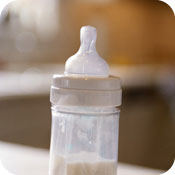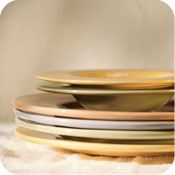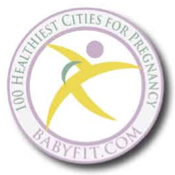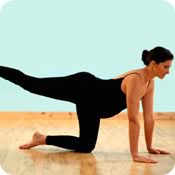 Choosing commercially prepared formula to feed your baby is an important decision. What you feed your baby now provides the foundation for future health and development. Be sure to talk with your baby's doctor about the appropriate infant formula for your baby. Your baby's doctor is the best person to provide recommendations about your baby's nutritional needs. You should never change formula without first checking with your baby's doctor.
Choosing commercially prepared formula to feed your baby is an important decision. What you feed your baby now provides the foundation for future health and development. Be sure to talk with your baby's doctor about the appropriate infant formula for your baby. Your baby's doctor is the best person to provide recommendations about your baby's nutritional needs. You should never change formula without first checking with your baby's doctor.
Feeding Supplies and Tips:
- Baby bottles are available in plastic or glass bottles, and disposable bottle bags. The type you choose is a personal preference. It is important to keep the bottle and all parts extremely clean. You will need to clean nipples, rings, and discs or nipple covers. Be cautious of bottles with cute shapes. They are often hard to clean. Use a measuring cup to measure formula. The markings on the outside of the bottles are only approximate.
- Nipples come in a variety of shapes and sizes. Choose nipples that correspond to your baby's mouth size and developmental needs. A baby's comfort and ease of sucking are the criteria to use when choosing a nipple. There are several basic nipple types:
- The traditional nipple is easy for most babies to use. However, a breastfed baby may not like the long nipple, because he is used to his mother's soft nipple. The traditional nipple comes in slow, medium or fast flow.
- An orthodontic nipple is considered a good nipple by many health professionals because it is shaped much like the mother's nipple when it is in the baby's mouth during nursing.
- A square tip nipple is a good nipple. However it may cause problems for the breastfeeding mother who is also giving bottles. The baby can develop a habit of biting the nipple to hold it in the mouth. Therefore, your baby may accidentally bite you during breastfeeding too.
- A cleft-palate nipple is meant for babies who have a lip or palate problem that keeps them from sucking properly.
- The premature nipple is for very small or premature babies.
- A bottle and nipple brush will assist in scrubbing bottles and nipples in those hard to reach spots.
- Discard cracked or chipped bottles that could break and spill formula onto your baby.
- Replace nipples regularly because they can become "gummy" or cracked with age. Check them by pulling the tip before each use.
- Test your bottle nipples from time to time to make sure the formula is flowing through them properly. Formula should flow out of the nipple freely, one drop at a time-not a steady stream. If formula flows too fast or too slow, try another nipple (many brands offer different-sized nipples).
|
 Choosing commercially prepared formula to feed your baby is an important decision. What you feed your baby now provides the foundation for future health and development. Be sure to talk with your baby's doctor about the appropriate infant formula for your baby. Your baby's doctor is the best person to provide recommendations about your baby's nutritional needs. You should never change formula without first checking with your baby's doctor.
Choosing commercially prepared formula to feed your baby is an important decision. What you feed your baby now provides the foundation for future health and development. Be sure to talk with your baby's doctor about the appropriate infant formula for your baby. Your baby's doctor is the best person to provide recommendations about your baby's nutritional needs. You should never change formula without first checking with your baby's doctor.





Member Comments